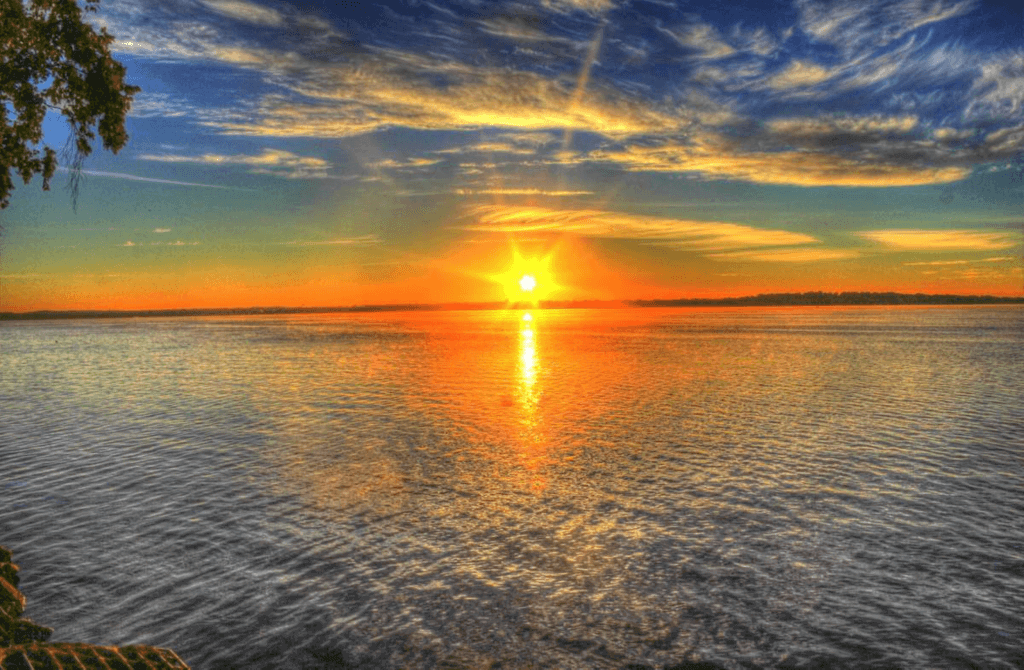Great Lakes Awareness Day
Great Lakes Awareness Day is observed next on Monday, May 4th, 2026 (150 days from today).

Great Lakes Awareness Day on Monday of the first full week in May celebrates the Great Lakes and highlights the issues they face, and how the lakes can be preserved.
Some facts about Great Lakes
- Lake Superior is the biggest and deepest one.
The largest freshwater lake in the world is located on the border of the US and Canada. It also borders Minnesota, Wisconsin, and Michigan, with an astonishing area: 31,700 square miles of surface water; 350 miles wide and 160 miles long; 2,726 miles of coastline; average depth of nearly 500 feet, with a maximum depth of 1,332 feet; and a volume of 2,900 cubic miles. It can be said that with this area, this freshwater lake has enough capacity to fill other large lakes.
- Ontario and Erie are the smallest.
Lake Erie, which borders Michigan, Ohio, Pennsylvania and New York, is 241 miles wide and 57 miles long, larger than Lake Ontario's 193 miles by 53 miles. But Erie's average depth is only 62 feet and has a volume of about 119 cubic miles, much smaller than Ontario's average depth of 283 feet and 395 cubic miles. Two lakes are connected together by Niagara River with the 35-mile-long.
- Just one of the locations totally located in the US.
True to its name, Lake Michigan with its 1180 cubic miles of water, 22,300 square miles of water, and 1600 miles of shoreline is the only of the Great Lakes to lie totally belonging to the borders of the United States. Moreover, it is combined to Lake Huron by the Strait of Mackinac between Michigan's upper and lower peninsulas.
- You can get 6500 mile roller through lakes.
The Great Lakes Commission established the Circuit Tour in 1988 as a scenic cruise tour around the five lakes and through the eight states (and Ontario) that make up the GLC. Navigating the 900-mile Lake Michigan Circuit Tour alone would take about 14 and a half hour without any stops.
- A fire to help the road to passive environmental recovery.
A fire on the Cuayahoga River in June 1969, and the iconic image published afterward, helped promote a number of environmental regulations aimed at cleaning up the waterways supplying Lake Erie, as well as the Lakes and rivers of the United States in general. Amendments to the Federal Water Pollution Control Act, known as the Clean Water Act, were enacted in 1972 to regulate water pollution and discharge and give the Environmental Protection Agency the authority to broader pollution control. In addition, the Great Lakes Water Quality Act in 1972 was signed by United States and Canada in order to restore and protect the waters of the Great Lakes.
- The lakes include more than 35000 islands.
Manitoulin in Lake Huron is chosen as the largest lake in the thousands of islands scattered throughout the lakes. It is chosen as the largest freshwater lake island with 1068 square miles and about 12,600 populations. Georgia Bay, also on Lake Huron, includes about 17,500 islands, while the archipelago in the St. Lawrence known as the Thousand Islands actually has about 1,800 islands.
- Lake Arrow is distributed from natural or French language.
Lake Erie is named depending on the Erie Tribe, who occupied the lake's southern shore. Michigan derives from a French version of michigami from Ojibwa. Huron is named for the tribe Huron. The Iroquois used their language to name Ontario with the meaning "beautiful lake". Explorers from France called the great water above Lake Huron with the name "le lac superieur", or “upper lake”.
- Regional shipping
The lake fleets of Canada and the United States, which include aircraft carriers, tankers, bulk carriers ("lakers"), tugs, and barges, carry up to 125 million tons of cargo annually. About 40% of the goods are iron ore and other mining products such as coal, salt and stone, while another 40% are wheat, corn, oats, soybeans and other agricultural products. Other commodities include steel, scrap metal, iron products, fuels and chemicals.
- The biggest fish can weigh up to 200 pounds.
Fishing is a wonderful activity on the Great Lakes. Some of the most popular catches include trout, trout, seahorse, perch, herring, and sea bass. Lake sturgeon is the largest fish appeared in the lake with the weigh over 200 lbs.
- Lake Superior has some required train and life.
While the SS Edmund Fitzgerald wreck on Lake Superior has paid attention, memorials and conspiracies surround its sinking, several other commercial ships have been sunk and abandoned network for many years around Whitefish Bay near Whitefish Point, Michigan. A wooden steamship named the Vienna of Cleveland had been sunk in 1892 on Lake Superior and is a popular spot for divers. The comet also sank on Lake Superior and claimed the lives of 11 people in 1875; the John M. Osborn collided with the Alberta in 1884 and drowned four men; and on only her second voyage, the SS Cyprus sank near Deer Park, Michigan in 1907, killing 22 of her 23 crew members.
The treacherous stretch of water south of Lake Superior between Munising, Michigan and Whitefish Point is known as the "Graveyard of the Great Lakes" and the "Shipwreck Coast" because hundreds of ships have gone missing in the area. It is estimated that 6000 sank ships in the Great Lakes with nearly 30,000 lost people.
History of Great Lakes Awareness Day
Around the world, Great Lakes have five with name: Superior, Huron, Michigan, Ontario, and Erie. They combine to create the largest body of freshwater on Earth with 750 miles east to west. They are put on the border of the United States and Canada and near the states of Michigan, Wisconsin, Minnesota, Illinois, Ohio, Indiana, New York, and Pennsylvania. It is believed that the Great Lake was covered by a glacier at a certain period and then it receded towards Canada and left behind water-filled depressions.
Lake Huron is named after the Wyandot Indians (also known as the Huron Indians) and it is the second largest of any of the lakes in the surface area. Manitoulin Island located in the world’s largest island in a freshwater lake. The Strait of Mackinac is the joint of Lake Huron and Lake Michigan. Lake Michigan gets the inspiration from the word “Ojibwa” with the meaning "great lake". It is the third largest lake in calculation of surface area and the second largest in volume. It is the only one with the location in the United States totally.
Lake Erie's name is derived from the Iroquoian word for "long tail", which is the fourth largest lake in calculating about surface area, but the smallest in volume. It is very shallow, with an average depth of only 62 feet. Lake Ontario gets its name from the Huron word for "clear lake." It has the smallest surface area of the Great Lakes, but is very deep, holding four times as much as Lake Erie. Niagara River is the connector of Lake Erie and Lake Ontario, above is Niagara Falls. Lake Superior is the largest Lake in terms of surface area and volume, and the deepest of the lakes, reaching a depth of 1,332 feet. Its name is derived from the French word for "upper lake", and fittingly, it is the northernmost region of the Great Lakes.
Vessels from the United States and Canada carry about 125 million tons of cargo across the lakes each year. They transport mined materials such as iron ore, coal, stone and salt; agricultural products such as wheat, corn, soybeans and oats; as well as other materials. The basin of Great Lakes has about 3,500 species of plants and animals with more than 170 species of fish. The lakes are major freshwater fisheries, home to species such as trout, trout, perch, walleye, sea bass, and herring.
The Great Lakes face many problems, such as pollution and invasive species, illustrating why it takes a day to raise awareness about them. There are more than 140 federal programs for environmental restoration and management on the Great Lakes. Amendments to the Clean Water Act were made in 1972, helping to regulate water pollution in lakes. The Great Lakes Quality Act was signed since 1972 to protect and restore Great Lakes by the United States and Canada.
How to celebrate Great Lakes Awareness Day
See if an organization or place near you is hosting any events of the day. Learn about the issues facing the Great Lakes and find ways to get involved to protect the lakes. Do not forget to plan a memorable trip to enjoy the wonders of the Great Lakes with your friends or your relatives. It is more interesting for you to explore the lakes by driving one of the Great Lakes Circuit Tours. It is believed that there are around 6,000 sunken ships in the Great Lakes with approximately 30,000 lives lost. You can spend entire day learning about some of the shipwrecks by visiting the Great Lakes Shipwreck Museum. One of the most famous ships to have sunk was the SS Edmund Fitzgerald, which sank during a storm in Lake Superior on 10 November 1975, with all 29 of its crew members perishing. It was immortalized in a song by Gordon Lightfoot.
Observed
Great Lakes Awareness Day has been observed Monday of the first full week in May.Dates
Monday, May 6th, 2024
Monday, May 5th, 2025
Monday, May 4th, 2026
Monday, May 3rd, 2027
Monday, May 8th, 2028


